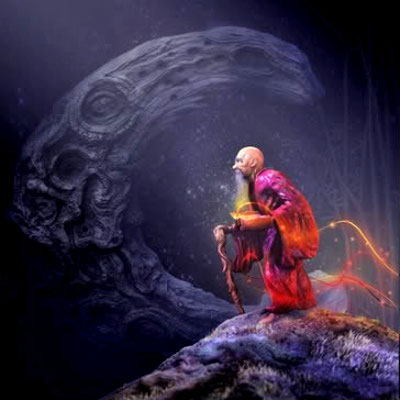|
by Jim Euclid
04 July, 2012
First proposed by Gerard 't Hooft, it was given a precise string-theory interpretation by Leonard Susskind, inspired by black hole thermodynamics. Metaphysicians and philosophers have since run with this idea, incorporating it into their spiritual paradigms, which encompasses both spiritual and metaphysical constructs.
David Icke popularized the concept even further when he pointed out to the general public that dissecting holograms into minute particles does not diminish the image; that the rose is contained within every pixel of the whole image.
This has strengthened the general notion of 'as above, see below.' The idea that what appears outside of ourselves is a reflection of what is happening within our consciousness is a concept as old as humanity. Within our unit of consciousness is contained the entire universe of collective consciousness.
If we had the capacity to
understand this, we would have total unity consciousness.
In doing so, he attained complete
enlightenment, and devoted the rest of his life to spreading the
dharma (the way of truth). Milarepa did not say that alien creatures
or UFOs do not exist but that some of what appears as external
entities are in fact inner mental afflictions that affect our
perception of the true reality.
Professor John Nash is greeted by a stranger after a lecture.
This stranger informs Nash that he has been nominated for the Nobel Prize in economics. Troubled by schizophrenia most of his life, Nash finds this absurd notion difficult to reconcile and is immediately suspicious of its reality and that the stranger before him is noting but a ghost.
To confirm or deny the presence of the stranger as a
'real' man or ghost, Nash asks one of his students who is standing
beside him if he too sees this man. Once the student validated the
Nobel Committee representative, Nash went on to listen to what he
had to say.
Without vigilance and moderation, one's perceptions can quickly lead one to make false assumptions.
One can safely conclude (as I do from personal experience) that malevolent entities, ghosts and aliens do in fact exist, but that does not distinguish them from being aspect of one's self. So how do we tell the difference between inner ghosts and outer ghosts, in spite of them coexisting in the same unity consciousness?
Paradoxically, all people, objects, ghosts, UFOs and malevolent beings are aspects of one's consciousness.
They are all
manifestations of each person's mind, but at the same time are
external 'separate' aspects of the greater unity consciousness. How
does this integrate with reality? Or more importantly, how do we
know what to do about it?
Regular citings are reported on a weekly basis by expert witnesses.
Some are later recognized as IFOs, but a percentage remain UFOs. UFOs can been seen flying through the sky, and researchers such as Richard Dolan confirm their presence through well documented evidence.
Carl Jung remarked rather evasively that UFOs are an aspect of the shadow archetype of one's ego, but what this means is they can only be seen by those subconsciously 'primed' to see them.
Those who do not believe, will only see shadows. When deniers are confronted with a glaringly opposing reality, they often dismiss or refute the obvious. Denial is the ultimate method of massaging reality in those who ignore the real world.
When
the tall
European tall ships first approached the early Native Americans, it
was such an ‘impossible’ vision in their reality that their highly
filtered perceptions couldn’t register what was happening, and the
villagers literally failed to ‘see’ the ships. Cognitive dissonance
leads to only two outcomes - reconditioning the mind or cognitive
dissonance.
To see only what has been seen before is a fictional
narrative of the mind. Though truth is stranger than fiction, it
still remains the truth.
I was born into a world where Newton's and Einstein's laws were a given, but these are being reconstructed in light of new physics:
...and more.
The Case Of The Missing Planet-Forming Debris
What we must adhere to as a philosophy is rigorous investigative study and the courage to embrace often painful rethinking of our attitudes in the face of a burgeoning influx of new consciousness arising upon the planet in the shape of shiny circular craft that defy, deny and delight the many human observers of what is a complex holographic universe within and without.
|

